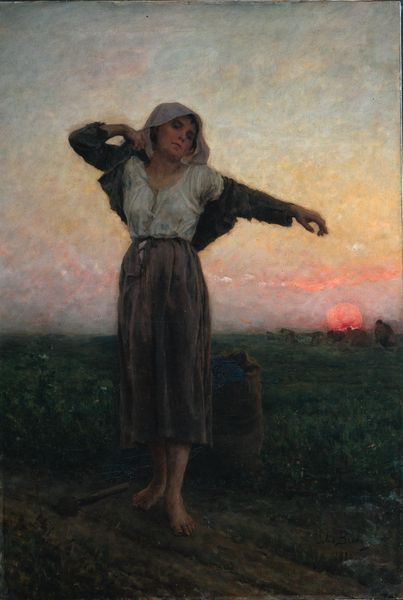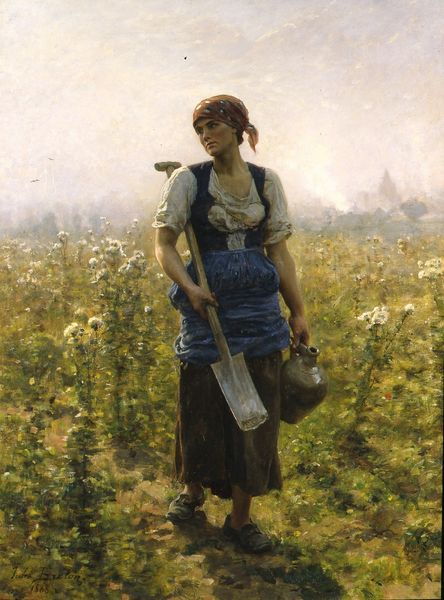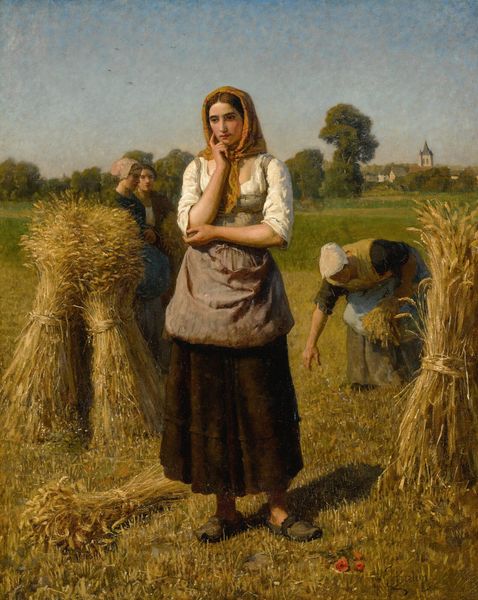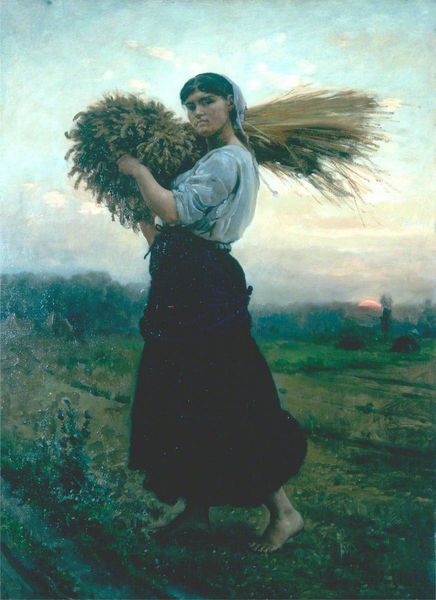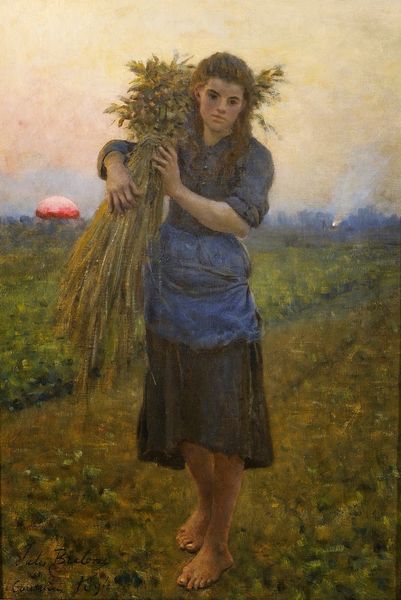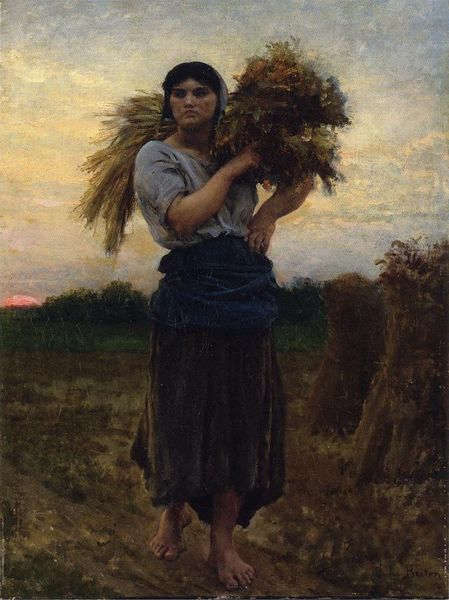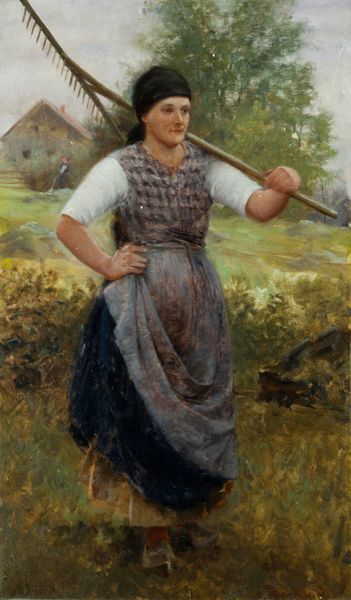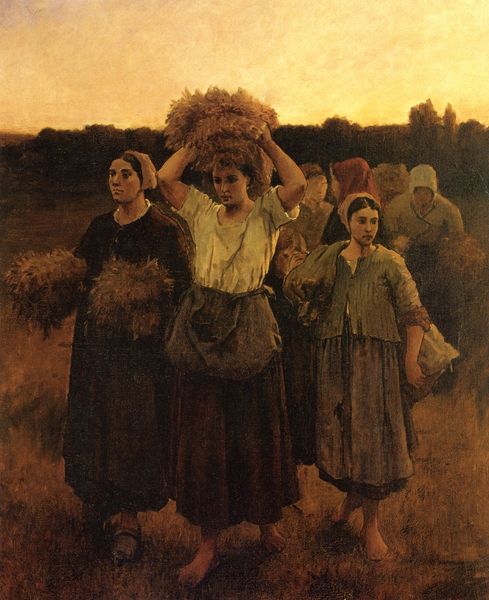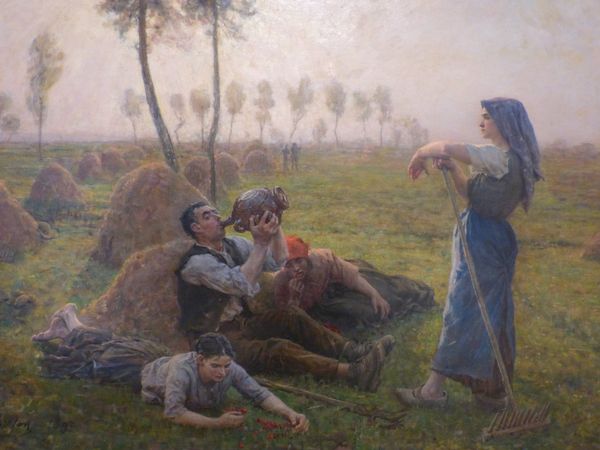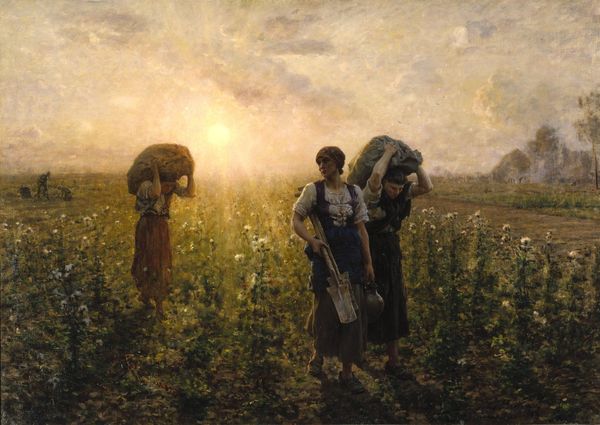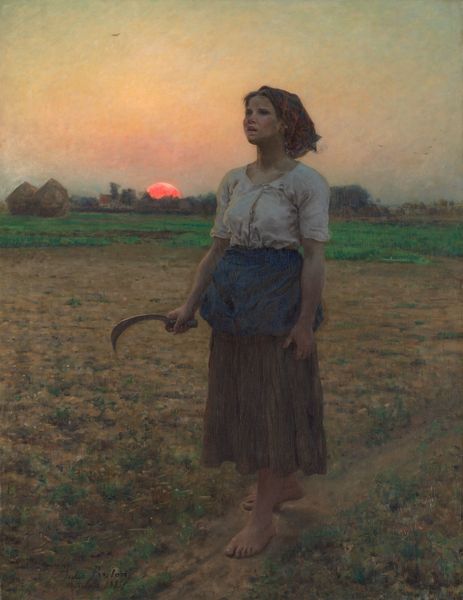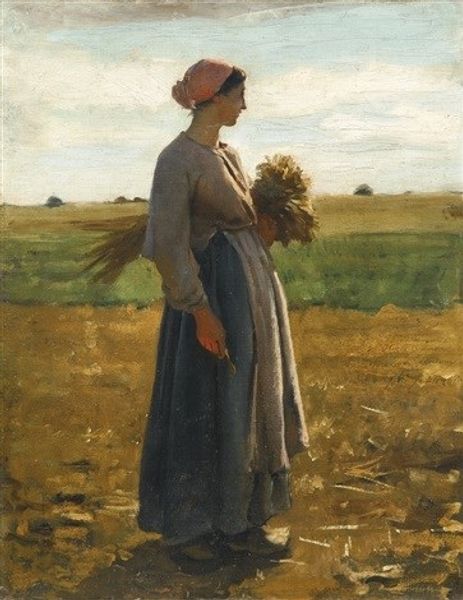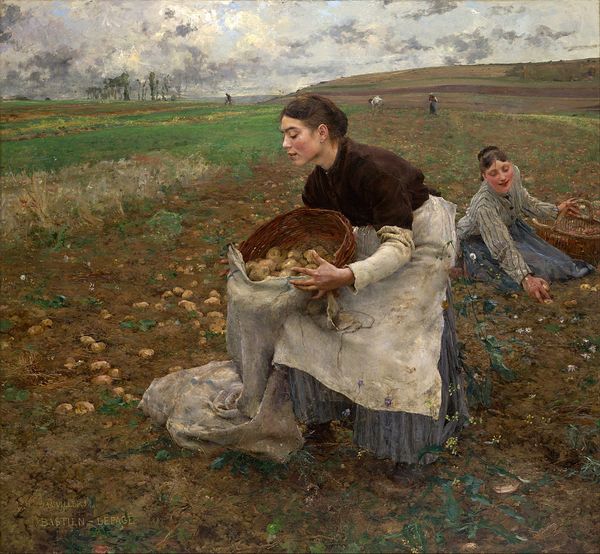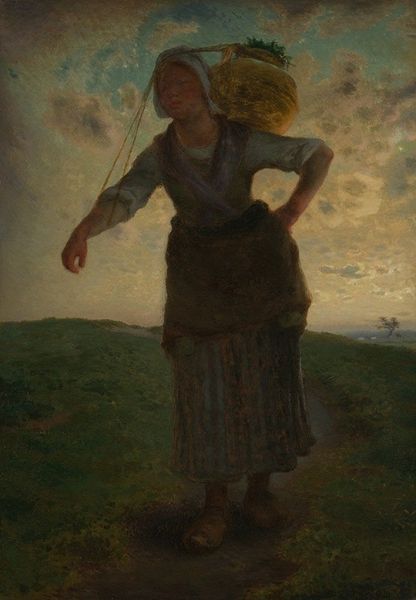
Copyright: Public domain
Editor: Here we have Jules Breton's "The Shepherd's Star," painted in 1887. It depicts a woman carrying a heavy sack across a field. The muted colors give it such a somber mood; it seems to be portraying a life of hardship, but is that the whole picture? What do you see in this piece from a historical perspective? Curator: That’s an interesting observation. The painting reflects the Romantic Realism prevalent in late 19th century France. Breton was known for his idyllic depictions of rural life, but through that, his work often carried social commentary. Have you considered who might have been the target audience, and what social message it tried to convey? Editor: Hmm, perhaps it's aimed at urban audiences? A reminder of the struggles in the countryside and the lives of laborers often overlooked? Curator: Exactly. Breton romanticizes the rural woman, making her a symbol. It brings her into art and makes a statement about laboring class people. Consider the Paris Salon where it was displayed. By displaying paintings like this, those at the time were attempting to generate some empathy among the powerful members of society viewing it in a salon setting. Editor: So it’s more than just a pretty picture; it’s a form of social advocacy. That’s really fascinating and helps recontextualize my initial feelings about the painting. Curator: It highlights how art is not created in a vacuum but is often intended to promote or fight against a range of political opinions. What else do you think this painting aimed to capture? Editor: It challenges our notion of the romantic countryside, it doesn’t glorify nature but highlights labor. Thank you for opening my eyes to the possible role of political intention behind artwork. Curator: You’re welcome! Looking at art through the lens of its socio-political context adds so much to our appreciation.
Comments
No comments
Be the first to comment and join the conversation on the ultimate creative platform.
